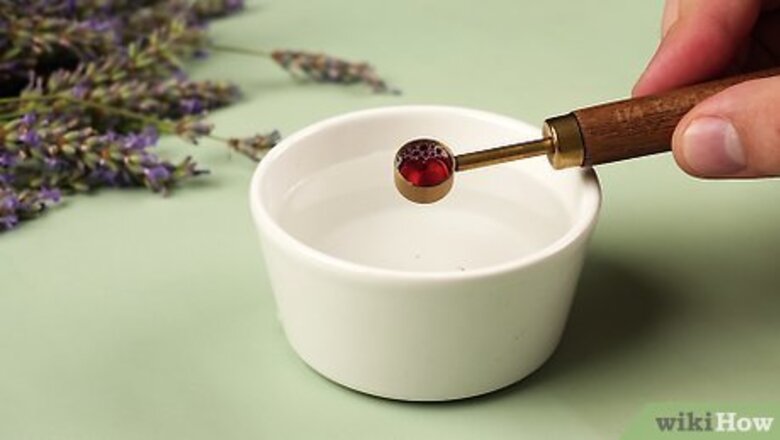
views
Gold and Gems
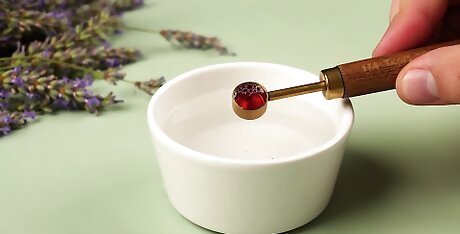
Add a few drops of dish soap to a bowl of club soda. Choose sodium-free club soda or seltzer water as salt may damage the jewelry. The carbonation in the soda or seltzer helps dislodge grime from the necklace. Put a few drops of any mild dish soap (free of dyes, perfumes, and moisturizers) in the club soda, then agitate the liquid to mix it up.
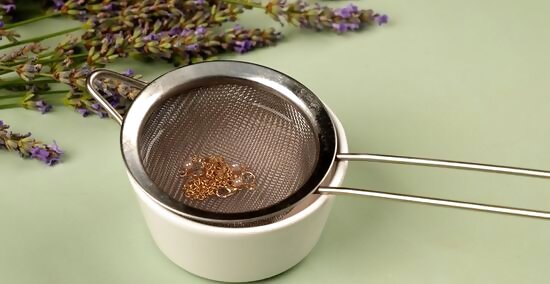
Put the necklace in a strainer and soak it in the bowl for 5 minutes. If you don't have a strainer, you could put the necklace directly in the bowl, though the strainer helps you remove and rinse the necklace. If the strainer is too large to fit in the bowl, reserve it for rinsing the necklace.
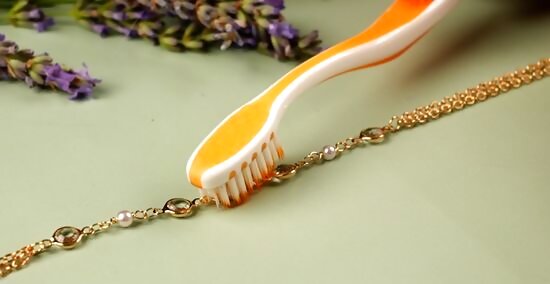
Scrub the necklace with a new, soft toothbrush. After 5 minutes, swish the necklace around in the solution to dislodge grime. Then, use a new, soft toothbrush to clean the chain, settings, crevices, gemstones, or charms. Scrub in a gentle, circular motion applying a minimal amount of pressure.
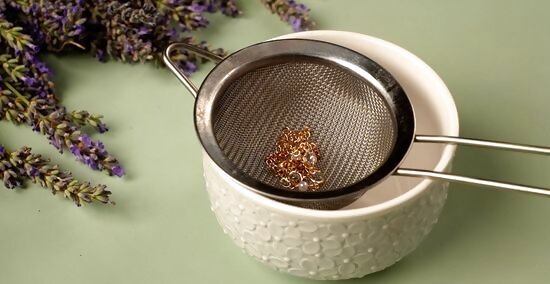
Rinse the necklace. Use warm, running water to rinse the club soda, soap, and debris off the necklace. The strainer is helpful for this step, as you can let water run over the necklace and through the strainer.
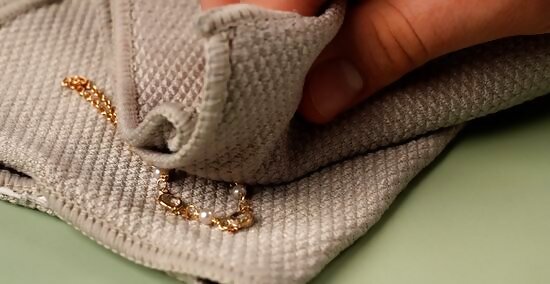
Dry the necklace with a lint-free cloth. Choose a soft, lint-free cloth to pat the necklace dry with, paying special attention to nooks and crannies. Then, lay the necklace out on the cloth to continue drying. A lint-free cloth is necessary to ensure fibers don't become stuck in the crevices or chain. You could use a blow dryer on a warm setting to speed up the process, if desired, or simply let the necklace air dry completely.
Sterling Silver
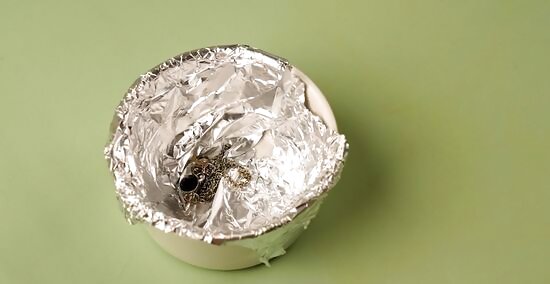
Line a heat-safe dish with aluminum foil and place the necklace on top. This method is intended for plain sterling silver chains that do not contain gems or stones. Ensure the dish or bowl is heat-safe and that it is deep enough to hold a few inches of water. The aluminum foil is essential for the chemical reaction. Alternatively, you can use an aluminum pie plate.
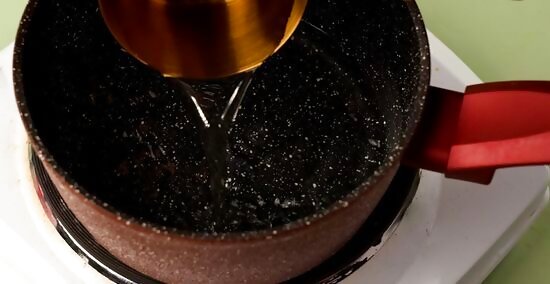
Add 1 tbsp (14 g) of baking soda to 1 cup (240 ml) of boiling water. Fill a small pot with 1 cup (240 ml) of water. Bring it to a rolling boil, then add 1 tablespoon (14.8 ml) (14 g) of baking soda to the pot. The solution will bubble and froth. Adjust the amounts if necessary so you can completely cover the necklace in bottom of the dish: use 1 tablespoon (14.8 ml) (14 g) of baking soda per 1 cup (240 ml) of water.
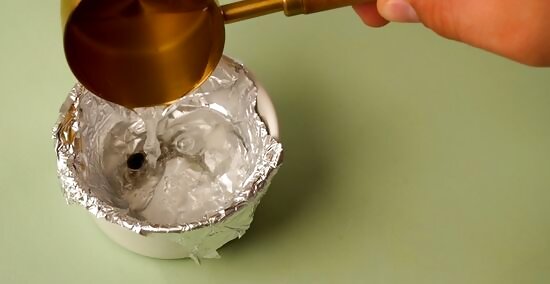
Pour the solution over the necklace and let it soak for 2 to 10 minutes. Take care not to burn yourself when pouring the boiling water into the dish. The amount of time you let it soak depends on how dirty or tarnished the silver is. Watch the change in the necklace itself due to the chemical reaction so you will know when it's clean. Letting the necklace soak longer than this can lead to tarnish, so remove the necklace after 10 minutes.
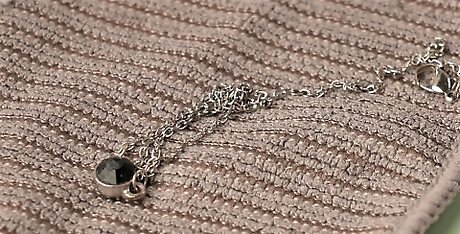
Remove the necklace and let it dry on a soft cloth. Use tongs or a fork to remove the necklace so you don't burn your hands. You don't need to rinse the necklace, just lay it out on a soft cloth to dry. The dirt and tarnish should be gone and your necklace will look like new!
Pearls
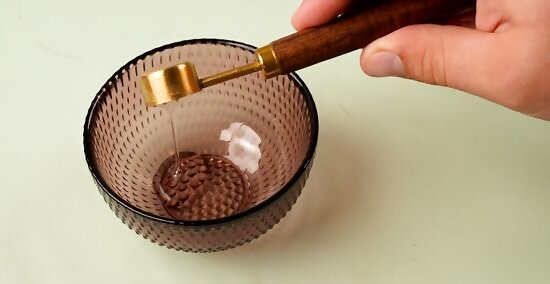
Mix 1 teaspoon (4.9 ml) of gentle shampoo with 1 quart (0.95 L) of water. Use a clean bowl or bucket, and choose baby shampoo or a gentle detergent (like Woolite). Agitate the liquid to mix it thoroughly. Chemicals and other cleaners can damage pearls, so do not use them to clean pearls. If your pearls are older or in poor condition, use a soft cloth dipped in warm water, rather than shampoo or detergent, to clean them.
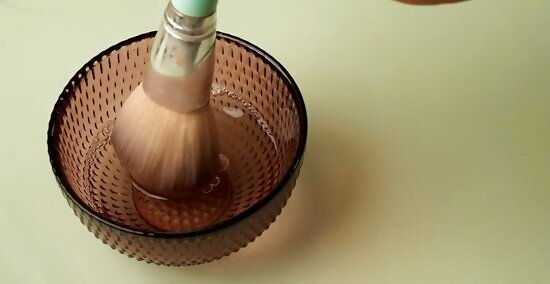
Dip a makeup brush in the solution and clean each pearl. Because pearls are organic gemstones, they are very delicate and prone to damage. Use a clean, soft makeup brush that won't scratch the pearls. Gently clean each pearl using circular scrubbing motions and minimal pressure.
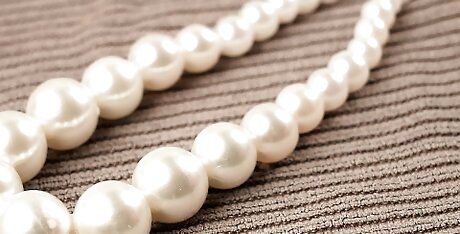
Lay the necklace out flat to dry. Don't hang the pearls when they're wet, or the string may stretch. Lay the strand on a dry, soft cloth and allow it to dry completely.
Costume Jewelry
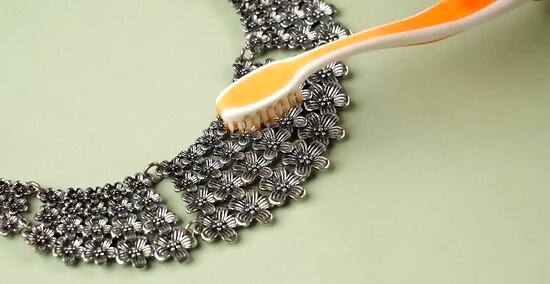
Remove green buildup with a new, soft toothbrush. Verdigris is the name for the green gunk that builds up on costume jewelry. Gently scrub it away using a new, dry toothbrush with soft bristles. A toothpick also works well to dig gunk out of small crevices. Costume jewelry is made with inexpensive materials and imitation gems. If your necklace is plated or made from pewter, nickel, or brass and has imitation stones, like cubic zirconia or lucite, it's costume jewelry.
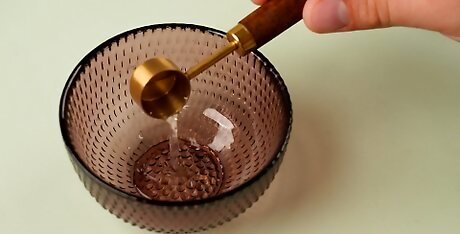
Mix equal parts baby shampoo and water. You only need a small amount of baby shampoo and water, as costume jewelry shouldn't be soaked in liquid. Avoid using vinegar, baking soda, or commercial jewelry cleaners on costume jewelry, as they are too harsh and can damage the necklace.
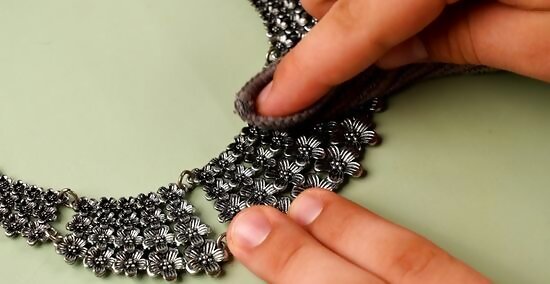
Wipe down the necklace with a cloth dipped in the soapy solution. You could use a cotton swab instead, if you prefer. Make sure you don't get the jewelry too wet, as water can loosen the foil behind the gemstones as well as the glue that holds them down. Pay special attention to crevices, clasps, and links.
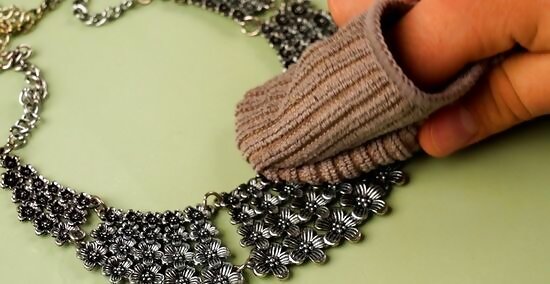
Rinse it quickly with cool water and pat it with a microfiber cloth. You can quickly run the jewelry under cool water, or use a clean cloth dipped in cool water to wipe it down and remove the soap. Use a microfiber cloth to pat the necklace dry.
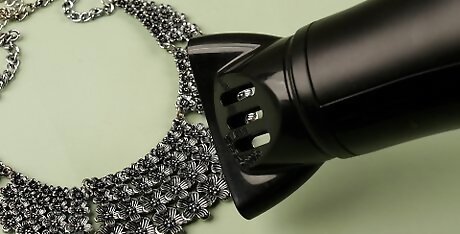
Dry the necklace with a hairdryer on a cool setting. Be sure to use only a cool setting, as warm or hot air may melt the glue or warp the necklace. Hold the hairdryer 3 inches (7.6 cm) from the necklace and be sure to direct air toward nooks and crannies as well. Continue until the entire piece is dry to prevent rust.



















Comments
0 comment